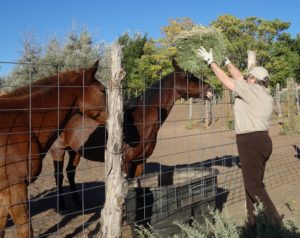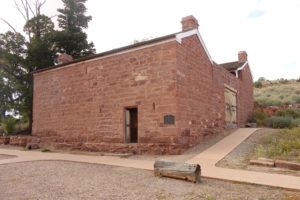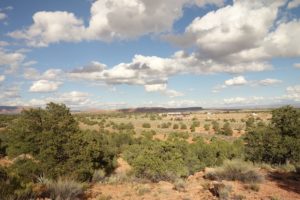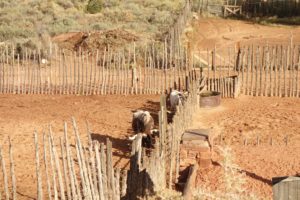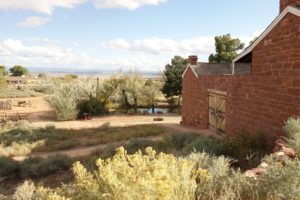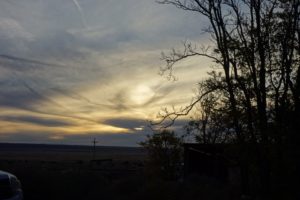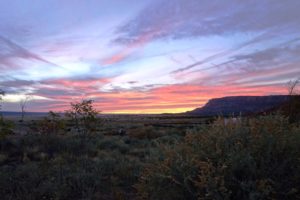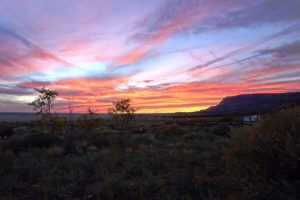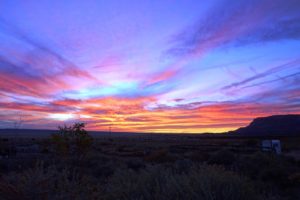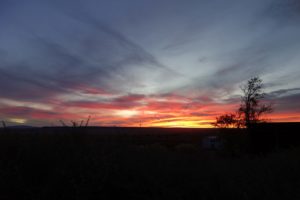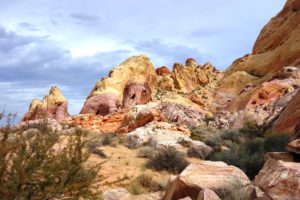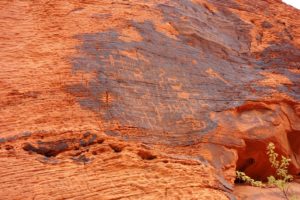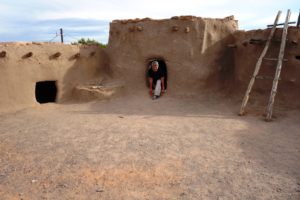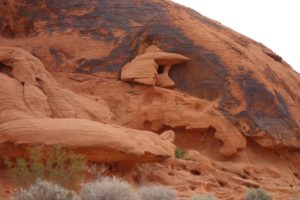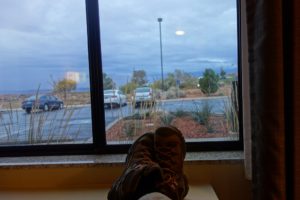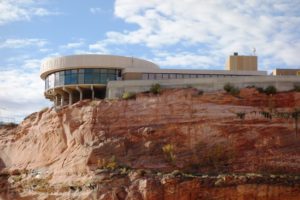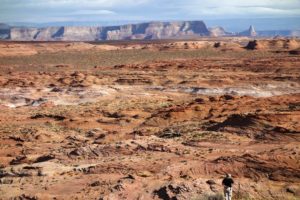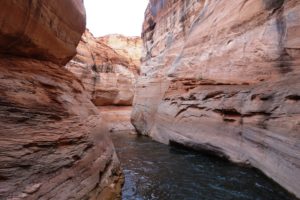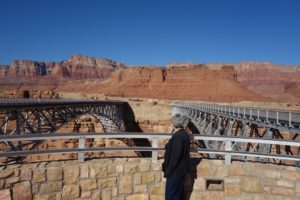
Navajo Bridge
We are on an overnight trip to Page, AZ. We started out with a communion service and breakfast in Kanab. Then we drove to the Colorado River just above the Grand Canyon. Navajo Bridge was built in 1929, making it efficient for cars to cross the Colorado River. By 1990, they needed a wider bridge that could handle heavier trucks. They left the old bridge up for pedestrians to use.
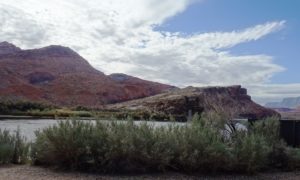
Original location of Lee’s Ferry. “Lee’s Backbone” is in the background.
Before Navajo Bridge, the only way to cross the river around here was to take Lee’s Ferry. John D. Lee was a Mormon. Back in 1857, Brigham Young was building a theocratic nation-state in Utah. President Buchanan took exception to that and decided to send out a civil governor, judges, and 2500 Federal troops. The Mormons decided the only reason to send troops would be to throw them out of Utah. This set up a hysterical war mentality that ultimately lead to the Meadow Mountain Massacre, where the Mormons in southern Utah killed 110 people in a wagon train trying to go to California. John D. Lee was the only person identified by name to participate in the massacre.
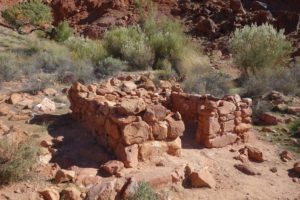
Building at Lee’s Ferry
Brigham sent Lee to a remote lumber mill for a few years. Then he sent him to the even more remote Colorado river to establish a ferry service for Mormons who wanted to move into Arizona. Lee created the ferry a few miles upstream of where they eventually built Navajo Bridge. Lee’s ferry used a steep hill, gaining 300 feet of elevation, called “Lee’s Backbone”. It was the hardest part of the journey to AZ. Wagons had to be double-teamed with oxen to make it up the hill. A few years later, Lee was tried for the massacre, found guilty, and executed by being shot. He was not the only person to participate in the massacre, but he was the only person ever punished.
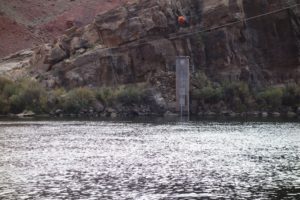
Second location of Lee’s Ferry
Lee’s widow took over the ferry and moved it downstream, closer to Navajo Bridge. The new location avoided the steep hill, but snow melt made the river impassible in the summer. Over the years, a cable was added to make the ferry safer. The ferry was used to transport materials for the Navajo Bridge. Unfortunately, the ferry sank about 6 months before the bridge was complete. They had to finish the bridge without the ferry, which added over a hundred miles of travel between the two sides of the bridge.
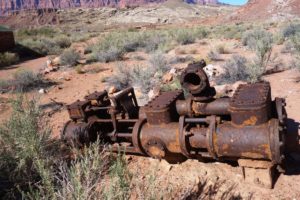
Steam Engine
Most people around here don’t know about the two different locations for Lee’s ferry. So now you know more than most about a small piece of Mormon history. The steam engine shown here was brought out when they found gold in the area. Charles Spenser started a gold mining company. Besides the steam engine, there are also remnants of a large steam boiler and the steam boat. The gold was very fine — really just dust. The plans for removing the gold were a total flop. The gold mining company was a spectacular failure.
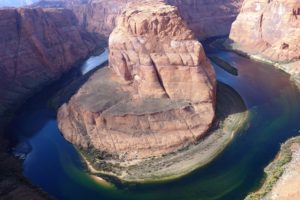
Horseshoe Bend
After that, we went to Horseshoe Bend. This is an easy 3/4 mile walk to a point where the Colorado River goes through a spectacular 300 degree bend around a piece of sandstone rock. The vantage point is high above the river. The view is quite dramatic.
We finished the day with hamburgers and ice cream for dinner. We’re snugly ensconced in our hotel room in the city of Page, AZ; well positioned for tomorrow’s adventures.

